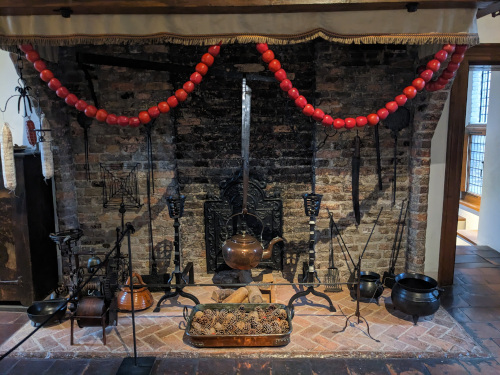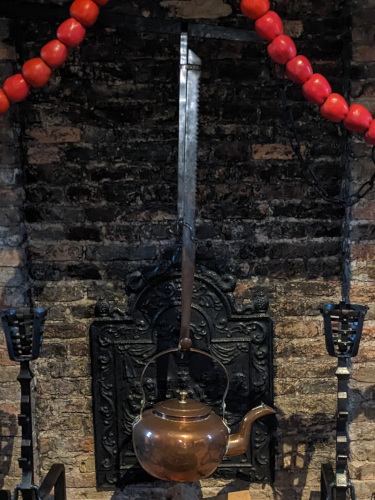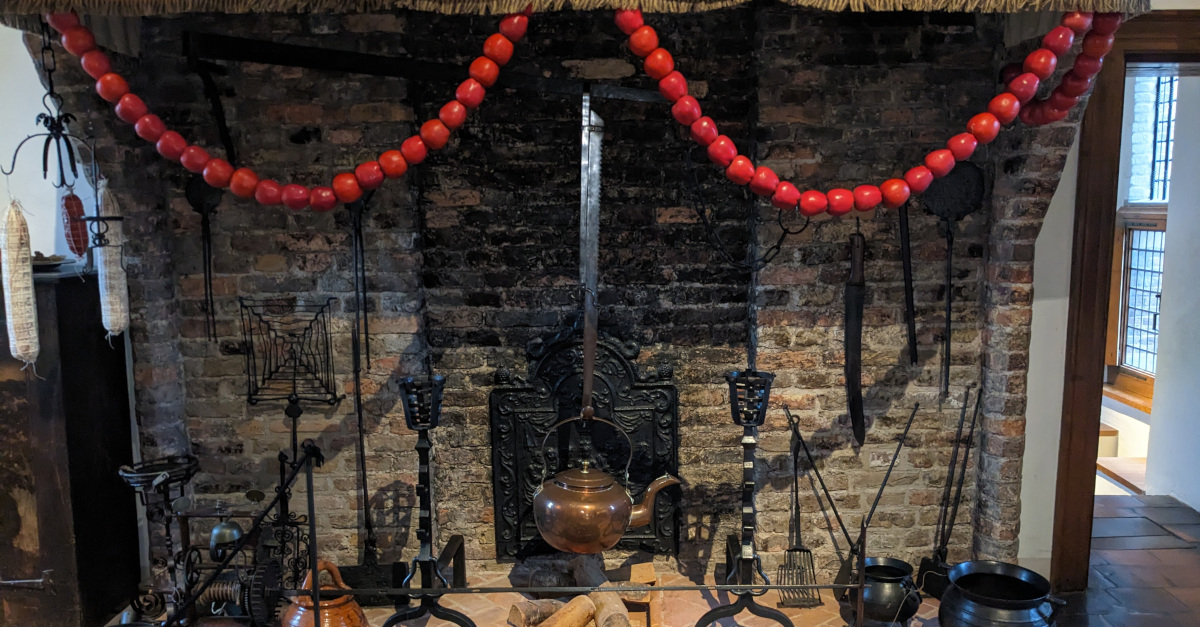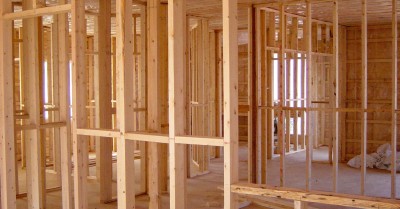Fireplace hangers
I'd never have thought of this during a design phase.My mother is visiting for a few weeks, and this last weekend I took her to visit Muiderslot Castle near Amsterdam. Near the end of the tour, I noticed a particular charactaristic of a fireplace, that made me think about how we design products these days.

At first glance, it looked like a long, thin saw blade, from which the pot was hanging.

It only took a moment for me to recognize its purpose. The theeth served as a ratchet, to fix the height of the pot above the burning fire.
Now I’ve cooked over camp fires before, and even on a wood-burning stove a few times in my life. But I’ve never cooked over an open fire place, and I’ve never used a fireplace hanger. And although the utility of this simple device was perfectly obvious to me once it was presented, it got me thinking…
Would I have ever thought of this on my own during the design phase, if I were designing an open fire place on my own?
I really doubt it.
Even my countless hours of playing Skyrim and other medeival-themed video games is not enough that I would have thought of this use case.
I may have been able to extrapolate from my experience with camp fires that I would want a way to place a rack at different heights above the flame. This is, afterall, a common feature of BBQ grills fitted in many public parks (at least in the U.S.).
But I imagine that even hours of sitting, brainstorming features for an open fire place would not have come up with the need to fix a pot at different heights above an open flame, let alone this solution.
However, I bet that using a fireplace to boil water for tea, to cook a stew, or even to wash clothes, for just a few hours, if even that long, would have made this need immediately obvious to me.
How often do we overlook obvious features by not including the users of our product?



